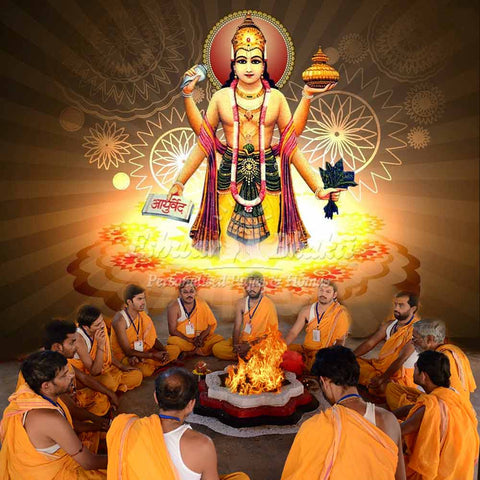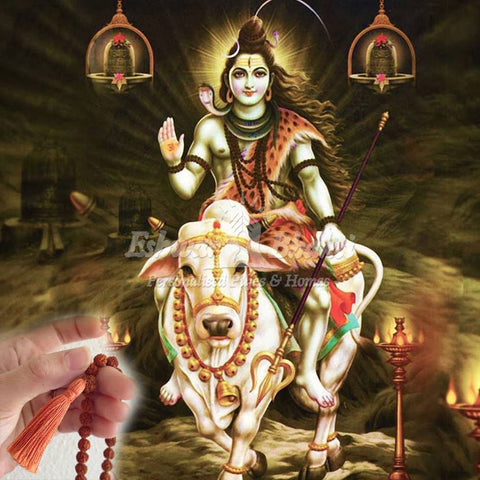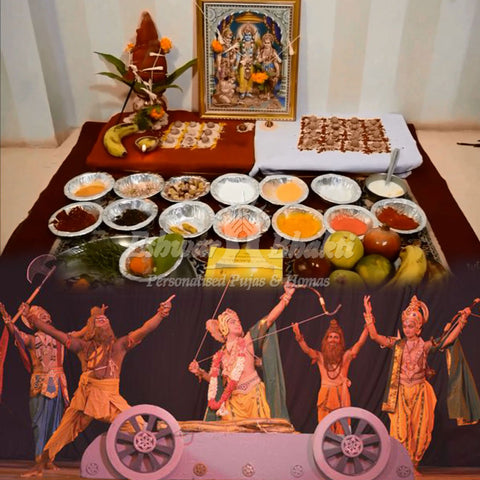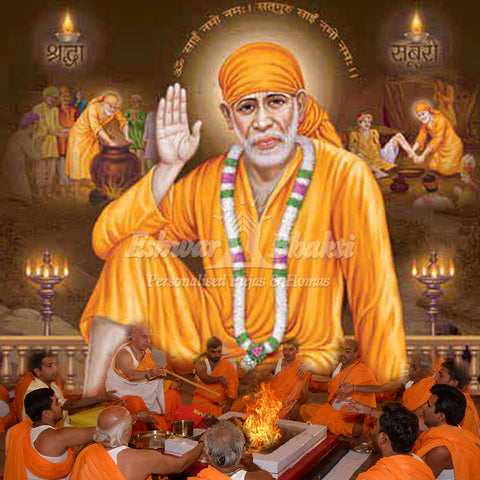Concept of Prasada
 Prasada is a Sanskrit word, which means grace or favor. In ancient traditions and texts, Prasada referred to the mental state experienced by Gods, sages, and other influential people. We can find a similar explanation in the Rig Veda as well. It was only through Shiva Purana Prasada gained reference as an offering of material substances. In the present era, Prasada or Prasadam is the food or water offered to the deity while worshipping or conducting puja. After the completion of the puja, Purohit distributes the Prasad to the worshipers. They eat them as they are equal to accepting the blessings from God.
Prasada is a Sanskrit word, which means grace or favor. In ancient traditions and texts, Prasada referred to the mental state experienced by Gods, sages, and other influential people. We can find a similar explanation in the Rig Veda as well. It was only through Shiva Purana Prasada gained reference as an offering of material substances. In the present era, Prasada or Prasadam is the food or water offered to the deity while worshipping or conducting puja. After the completion of the puja, Purohit distributes the Prasad to the worshipers. They eat them as they are equal to accepting the blessings from God.
Devotes make different kinds of offerings to the deities. However, it is essential to provide Sattvik food or vegetarian items to God. There are other aspects to be considered while offering food to God. They include:
1. Always prepare the food in a clean and hygienic place. One has to make food with a stable mindset as preparing food for the deities is an act of conveying our reverence.
2. The ingredients used for making the food must be clean as it aids in imbibing Sattvik Gunas.
3. Avoid using onions, garlic, and mushrooms, while preparing food for the deities. It is because they contain elements capable of inducing passion, as per the Vedic scriptures.
4. Always offer food to the deities in a clean and unused utensil.
5. While preparing the food for the deities, never taste them before offering it to the Gods and Goddesses.
These are some factors one must consider while preparing food to be offered to the deities. Devotes can offer the food items prepared in their houses to the idols in their home altars. It is a way of acquiring blessings from the divine entities. However, in temples, there are different kinds of Prasads available. Theertha is the holy water offered to the devotees by the priest while visiting a temple. They also give flowers as Prasada. One of the unique Prasadas given from the temples is Panchamrita. It is a combination of ghee, milk, honey, curd, and sugar. In South India, Sakkara Pongal is a Prasad offered in many temples. Some temples also provide Wada, Lado, and Tahir Sadam as Prasadas to the devotees. Temples also offer Prasadas based on the deities. For instance, the temples of Lord Krishna offer milk products, butter, and Tulsi as Prasada.
Significance of Prasada in Puja:
"Patram Pushpam Phalan Toyam Yo Me Bhaktya Prayacchati, Tadahan, Bhaktyupahritamasanami Prayatat nanah"
This is a verse from the Bhagavat Gita regarding Prasada or the offerings one can make to the deities. It means that the Lord accepts a loving heart, a leaf, a fruit, or water if the devotees provide it with devotion. It is a representation of the notion that the materials offered to God are not as significant as the devotion. There are other significances connected with Prasada as well.
1. Prasada can be food, water, or flowers that a devotee receives after the completion of a Puja. Worshippers believe that God consumes the food when we offer it to him or her. It would make the food items gain spiritual vitalities. When the devotees have the same food, they embrace the positive energy emanating from it.
2. Gaudiya Vaishnavas are believers of Lord Krishna. They consume food only after they offer it to Lord Krishna. They eat nothing without first offering it to Lord Krishna and getting His blessings.
3. There are three stages of Prasada. The first one is preparation, where the devotees prepare the food in a hygienic place with clean ingredients. The second one is offering it to the deities to garner blessings. The third one is eating the Prasad with devotion. The entire process is equal to a meditative discipline. It is because it soothes our mind and enhances our mood.
4. You can also place food in front of an image of the deity. It is a way of honoring God before consuming the food.
5. Though the concept of Prasada has a traditional origin, it has a logical explanation as well. Prasada is clean and healthy. Its consumption can aid in improving our health. Prasada would have absorbed the positive vitalities as we place them in front of the deities. The energy from the idol or the Murthi flows to the food.
These are some of the significance of involving Prasada in puja. It is a way of gaining blessings from God. It is also a sacred process.
Benefits of Prasada in a Puja: There are several benefits of Prasada in a Puja. It is an essential part of Hindu rituals, ceremonies, and prayers. After the completion of a Puja, the priest offers Prasad to the devotees as a blessing of God. There are other benefits of Prasada in Puja as well.
1. On a material level, we cook the food offered as Prasada in a hygienic manner.
2. On a spiritual level, Prasad contains the grace of God.
3. As per Bhagavat Gita, the food that is given as Prasada includes Sattva Gunas and is healthy.
4. Prasad is also a symbol of mercy. Many temples offer Prasada as meals to the people, which helps a lot of poor people.
5. The offering of food to God before consumption is the depiction of the idea that everything belongs to God.
Thus, the offering of Prasada is a significant part of Hindu pujas and rituals. It is a way of attaining blessings from the Gods and Goddesses.








